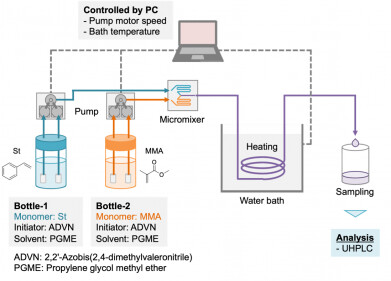-
 Image Credit: Cambridge University Press
Image Credit: Cambridge University Press
Research News
Research reveals harmful effects of microplastics and nanoplastics on human health
Jun 18 2024
New research highlights the urgent need for deeper understanding of the impact of microplastics and nanoplastics (MPs/NPs) on human health, citing them as a significant threat. These tiny plastic particles have been detected in various human tissues and fluids, including placenta, brain, lung tissue, blood, and faeces. Their absorption into the body can trigger oxidative stress and reactive oxygen production, potentially leading to cellular damage and dysfunction, and increasing the risk of serious health conditions such as Parkinson’s, cancer, and diabetes.
A recent metastudy published in Cambridge Prisms: Plastics by Cambridge University Press reviewed 130 research studies, revealing gaps in knowledge and emphasising the need for regulators to reassess environmental and health risks associated with MP/NP pollution. The study, ‘Mitochondria as a Target of Micro- and Nanoplastic Toxicity’ by Dal Yöntem of Koç University and Müfide AydoÄŸan Ahbab of the University of Health Sciences Türkiye, underscores the critical need for further research into the effects of plastic pollution on human health. It calls for renewed efforts to reduce plastic use at individual and national levels.
MPs/NPs, small enough to be inhaled and absorbed into the bloodstream, pose a particular risk to mitochondrial health. These microscopic powerhouses within cells are vulnerable to damage from MPs/NPs, potentially leading to conditions like neurodegenerative diseases and cardiovascular disorders. Despite being prevalent in our environment - found in oceans, soil, air, and organisms in the food chain - the full extent of human exposure and the toxicity of NPs remain unclear due to limitations in detection methods.
The study also highlights the dominance of primary MPs (microbeads used in consumer products) and the lack of research on secondary MPs/NPs, which form from the degradation of larger plastic items. These secondary particles, more abundant in the environment, present varied shapes and properties that could exacerbate their impact on human cells compared to smooth-surfaced primary particles like polystyrene.
Yöntem and AydoÄŸan Ahbab stress the importance of expanding research beyond polystyrene and exploring the effects of other plastic types and additives absorbed from the environment. They emphasise the need for interdisciplinary collaboration to address this global health concern, urging governments and organisations to adopt policies that promote sustainable alternatives to plastic and mitigate plastic waste.
In conclusion, heightened awareness of MPs/NPs’ potential health risks could drive collective action towards safeguarding current and future generations from their harmful effects.
More information online
Digital Edition
Lab Asia 31.6 Dec 2024
December 2024
Chromatography Articles - Sustainable chromatography: Embracing software for greener methods Mass Spectrometry & Spectroscopy Articles - Solving industry challenges for phosphorus containi...
View all digital editions
Events
Jan 22 2025 Tokyo, Japan
Jan 22 2025 Birmingham, UK
Jan 25 2025 San Diego, CA, USA
Jan 27 2025 Dubai, UAE
Jan 29 2025 Tokyo, Japan


















